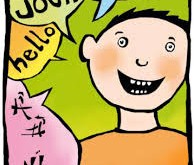By Sammi Wong
Sammi Wong is a Teach For America—Chicago corps member. She teaches at a bilingual English-Chinese pre-K. Week of the Young Child is April 12-18.
Imagine yourself as a little three-year-old child going to school for the first time in your life. Imagine dealing with all the emotions that come with separating from your parents, being thrown into a foreign room that you’ve never seen, and having as your only resources adults whom you’ve never met. Now imagine these adults don’t understand anything you’re saying, and are speaking to you in a language that you’ve never heard.
Would you feel safe? Would you feel like this is a place where you can learn? You wouldn’t, and many kids don’t.
Too often, our schools promote English at the cost of bilingualism. English is undeniably valuable for those who live, learn, and work in our country, so to be clear: my issue is not that students are being taught English, but rather that they are not being taught the values and beauty of bilingualism.
I work in a community-based organization on the south side of Chicago that serves predominantly Chinese-American families who are either immigrants or first generation. Over 80 percent of my students speak Chinese as their home language (although dialects vary). My students should have a leg up: there’s strong evidence to support that interacting with a “foreign” language boosts student performance in the core subjects. Bilingual children develop denser gray matter in the brain and are more likely to outperform their monolingual counterparts in a myriad of cognitive thinking. They often are better at analytical reasoning and concept formation.
These are among the many boons of bilingualism that should take place, but the reality is that our country has an inherent contradiction about the way we view and treat bilingualism in childhood. As adults, when we meet other people who are bilingual, we genuinely believe that it is an asset that they have. Being bilingual helps one be more understanding of other cultures in our increasingly global world, and makes one more competitive in today’sinternational and interconnected job market. However, our public schools are operated in a way that too often stigmatizes students who are considered English Language Learners (ELL). They can be viewed as being behind their peers; as being “slow” in subjects they might very well excel at. Their native languages are generally viewed as roadblocks; as something to overcome, and not something to celebrate.
Many students feel pressured into making a choice between their home language and English. When presented with that choice, one has to realize that it is not really a choice. In order to be successful in the education system here in America, one absolutely needs to be proficient in the English language.
The students who attend my bilingual early childhood center are the lucky ones. Many of the teachers, like myself, share the background of our students: my family emigrated from the same country, and I can relate deeply to my students. I wouldn’t want to force them to choose between communicating with their parents and communicating with their teachers.
Our young ones are being exposed to books, music, and holidays in their home language and culture. Print around the classroom is always written in both English and Chinese. Teachers are intentionally expanding not just their English vocabulary but also their Chinese vocabulary. They will come out of preschool with a firm grasp on English while being reinforced with the idea that bilingualism is an asset, not a hindrance.
The students’ identity, self-concept, and view on their home culture are permanently altered because they went to a preschool that teaches them to embrace both the Chinese and the American part of their identifier. They are not just Americans and they are not just Chinese but they are both. They are always going to struggle with clashes between these two cultures – that is inevitable in their life. I know that they will because I, as a grown adult who is more often than not certain of my identity, still struggle with these clashes. But my students will have a firm foundation to fall back on that tells them that the two cultures can coexist with one another and are not mutually exclusive.
 Asian Fortune Your source for all things Asian American
Asian Fortune Your source for all things Asian American


